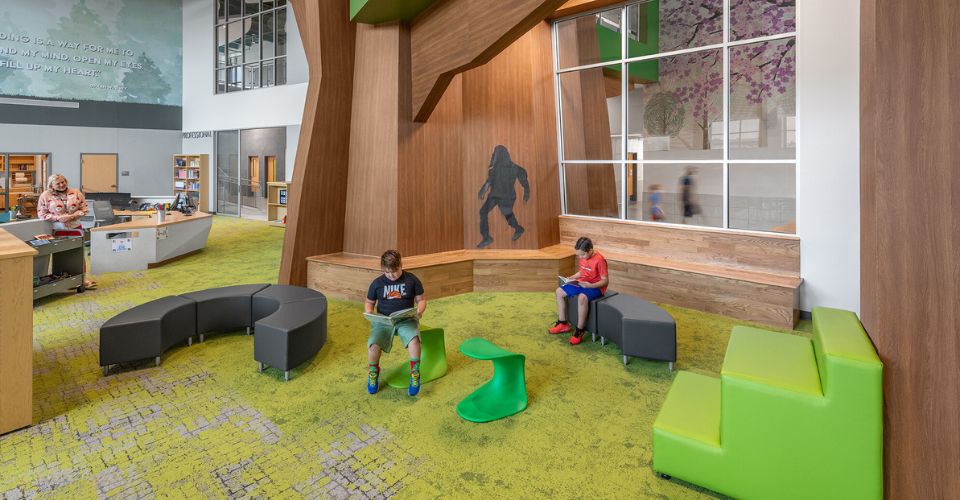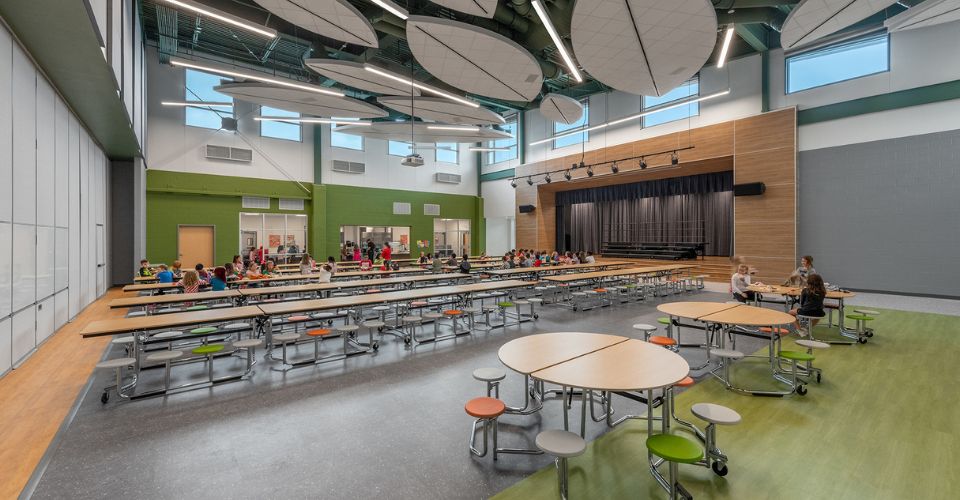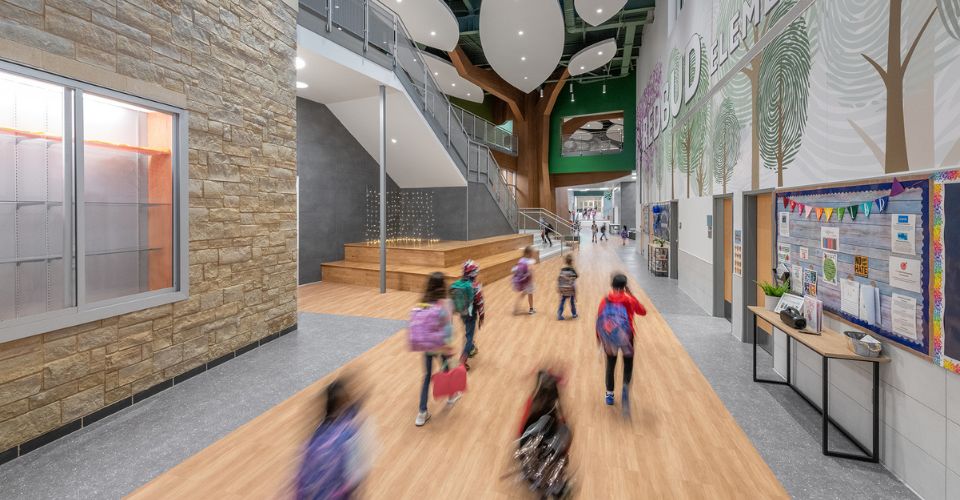Nature has always been a source of inspiration, influencing centuries of art, literature, design, and music. In recent decades, science has proven what we’ve always felt – that experiencing nature has positive mental and physical benefits.
Biophilic design seeks to wield the power of nature with intent, positively impacting building occupants by incorporating natural elements or nature-inspired materials, colors and patterns into interior spaces. Recently, consulting firm Terrapin Bright Green published the second edition of The Economics of Biophilia, inspiring us to launch a new blog series based on Terrapin’s reimagined report that focuses on the segment-specific outcomes of biophilic design and their translation into economic value.
The Cost of Education and Return on Investment
The United States spends approximately $631 billion per year on public education, which translates to an average of $12,509 per student. However, despite spending more on educating students than most other countries, the U.S. actually falls in the middle of global educational rankings.
Education is an investment with far-reaching impacts. The quality of education and the learning experience contribute significantly not only to individual student outcomes – they affect community outcomes as well. Beyond scholastic achievement, indirect benefits can be calculated in terms of graduation rates and likelihood of college matriculation, as well as local spending, employment and investment. Because skilled workers with more education tend to have higher incomes, they are able to spend more money in their communities and stimulate their local economies.

© Wade Griffith Photography
Room for Improvement
Historically, efforts to improve education have primarily focused on academic performance, with emphasis placed on the curriculum and skilled teachers. However, the classroom environment represents a substantial opportunity to positively impact students and staff.
Growing evidence suggests that incorporating biophilic elements, such as potted plants, nature-inspired designs, natural light, and views of green spaces, into classrooms and other learning spaces can improve early childhood cognitive development, student behavioral health and well-being, and academic performance, as well as stress recovery.
Learning Rates & Academic Performance
In a survey of 20,000 U.S. high school students, 74% had negative feelings associated with school. Feelings of stress, boredom, and tiredness were the most common answers. One option for combatting this situation is designing learning environments that leverage the power of nature through biophilic design.
While comfort has traditionally been viewed as a luxury rather than a need, an increasing amount of research challenges this perception. Studies have found that when classrooms feature biophilic elements, students report feeling more relaxed within the space, making it easier to focus on their lessons. A recent comparison of biophilic and conventional classrooms at Green Street Academy in Baltimore supported students’ claims with data by measuring heart rate variability (HRV), a biological marker of stress — people with higher HRV are usually less stressed and happier. The project determined that students in the biophilic classroom saw larger reductions in stress compared to those in the conventional “control” classroom.
Biophilic learning environments also seem to influence how favorably students view their education experience and how they perform on tests. The Green Street Academy study found that children in the biophilic classroom shared that they felt more engaged in learning and were more likely to report positive perceptions of instructors and subject material than their peers in the control classroom. Investigators also saw that test scores and academic performance showed improvement in biophilic classrooms. In fact, test scores were 3.3x higher for students learning in a classroom with biophilic elements compared to those learning in a conventional one.

© Wade Griffith Photography
Graduation Rates
A key misconception is that better quality education equates to better graduation rates, but the data shows this isn’t necessarily true. Minnesota is one of the top-performing states in the country when it comes to standardized tests, while Mississippi is one of the lowest. However, Minnesota’s average graduation rate is 84%, while Mississippi’s is 85%.
A study in Taiwan measuring the outcomes of students in biophilic classrooms saw fewer sick days and behavioral incidents compared to those in control classrooms. Additional research shows a correlation between exposure to nature and higher graduation rates as well as plans to continue their education at a college or university. Once again, biophilic design provides schools with opportunities for improvement.
These examples underscore the importance of ensuring that more students have a positive experience at school – after all, if someone experiences stress and boredom in a particular place, it’s not surprising that they’d be inclined to avoid it.
Financial Translation
While the connection between student success and an individual’s earning potential is clear, it’s also important to consider how individual earning power compounds for a greater societal impact.
According to the U.S. Bureau of Labor Statistics, high school graduates earn almost $10,000 more per year than high school dropouts, and college graduates earn almost $34,000 per year more than those without a high school diploma. When one student makes more money, that impacts their life. When hundreds of thousands of students make more money, that impacts an entire economy.
One study estimated that improving U.S. student test scores by a quarter of a standard deviation could yield a 5.2% increase in discounted G.D.P. – surpassing the country’s current public education expenditure of 4% of G.D.P. A separate study estimated that if the U.S. high school graduation rate increased from the 2015 baseline of 83.2% to 90%, the economy would benefit from an additional $5.7 billion in G.D.P. by the midpoint in those students’ careers. This research illustrates the close ties between student success and the success of society as a whole.

© Wade Griffith Photography
Keeping the Benefits of Biophilia Accessible
Given the societal impact that could result from increased student success, it is imperative that students from all backgrounds have access to the benefits associated with biophilic education spaces. Because public school funding in the U.S. is primarily dependent on local income and taxes, it varies wildly from district to district. Already, there is concern that better-funded schools will be at an advantage when it comes to providing biophilic environments to students, further widening existing socioeconomic gaps.
Fortunately, studies have shown that even small changes can yield positive results, many of which require minimal investment, such as adding potted plants, installing carpet with nature-inspired patterns, improving window treatments for daylight access, and enhancing outdoor the landscape. These low-barrier entry points are key to keeping the benefits of biophilia accessible to all students – we just need more school boards and finance programs to prioritize nature in the planning, design, and materials specification processes for their classrooms and campuses.
Stay tuned for the next part of the series, which will explore key findings from The Economics of Biophilia for healthcare facilities.